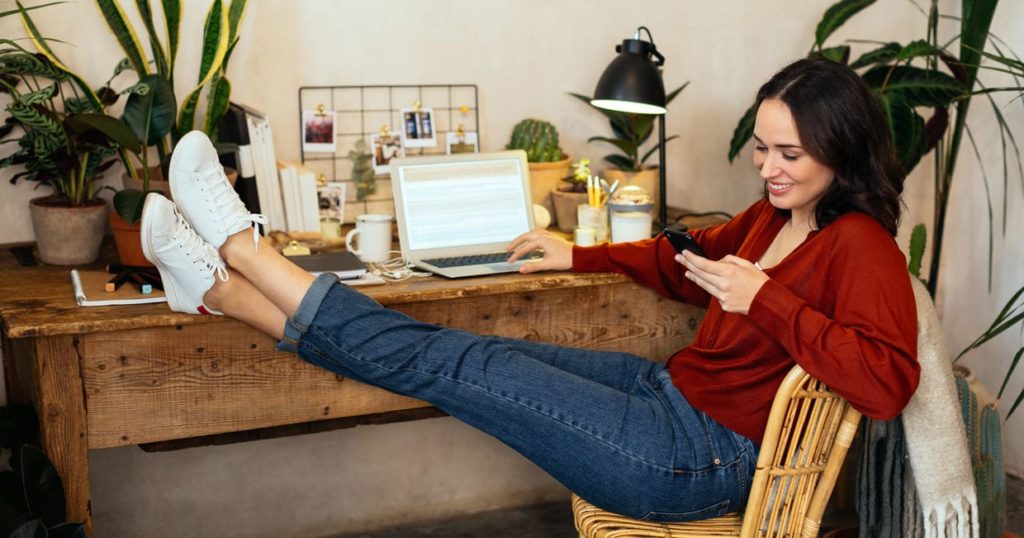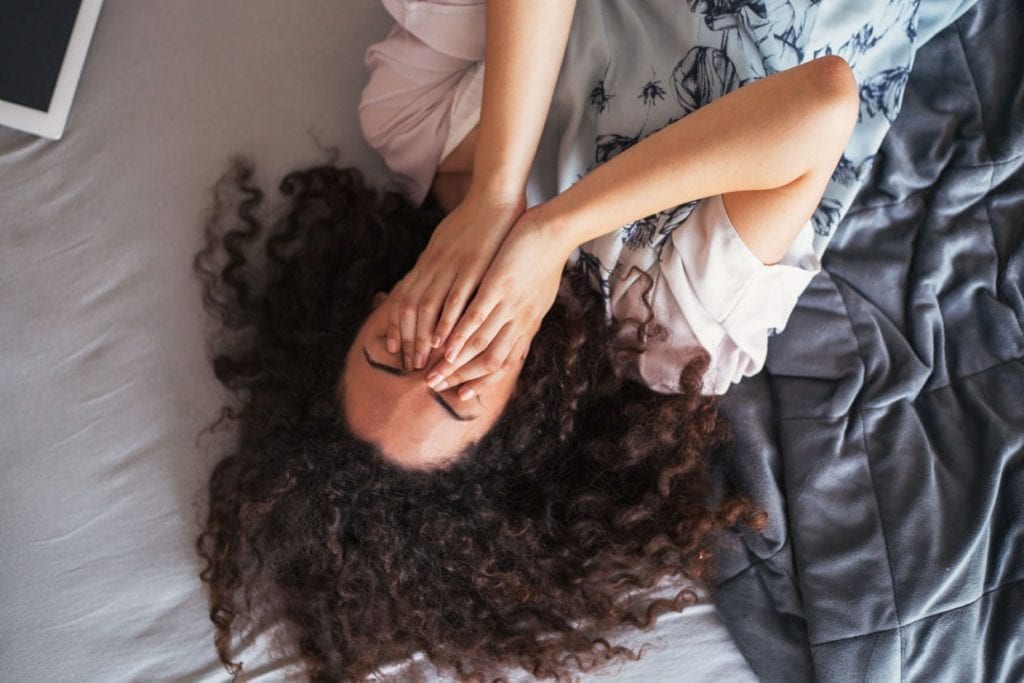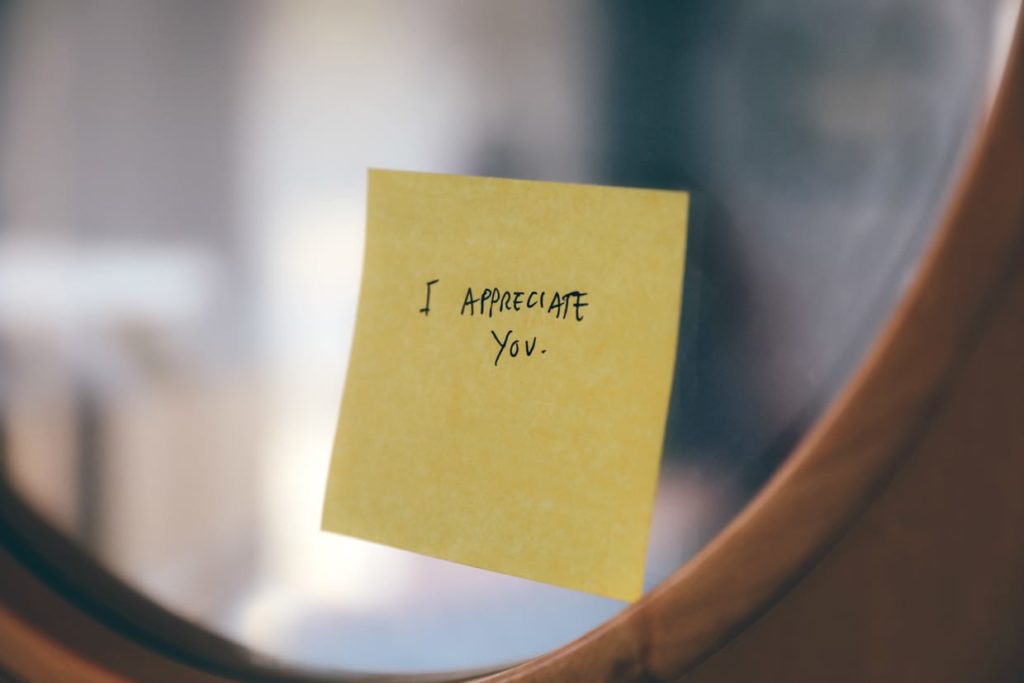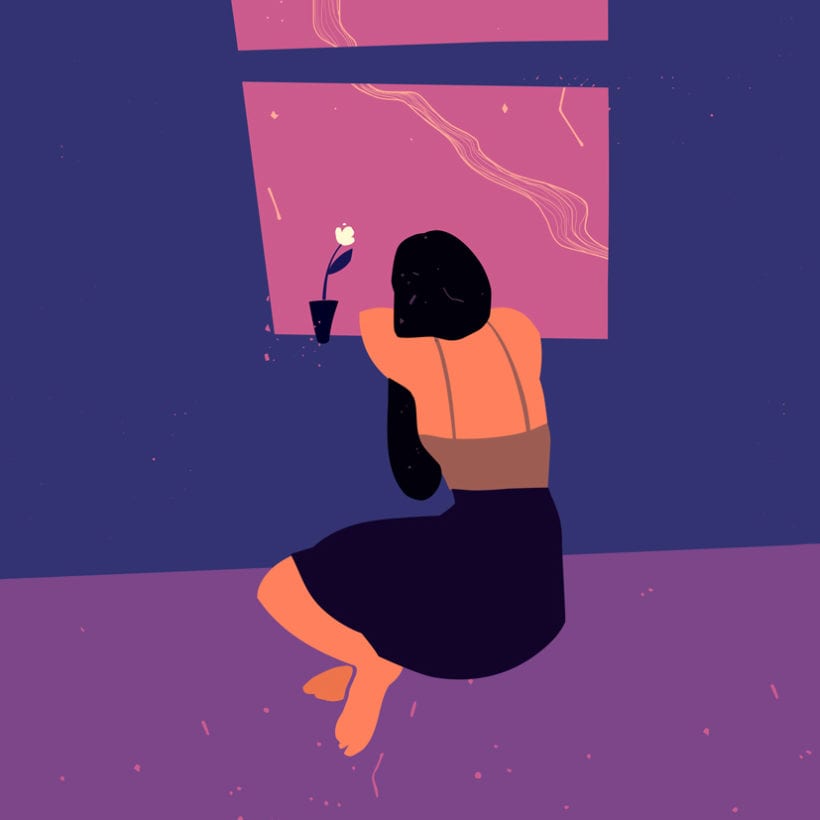The nature of therapy has changed since quarantine began (it’s virtual, for one, because we’re living through, oh you know, a global pandemic) but being a therapist has also become a whole new ballgame. I was wondering what this shift has been like for mental health practitioners; so, I asked therapists. I heard from over 30 about how quarantine has altered their practice, their clients, and their own self-care.
Therapy Over Zoom: The Challenges
Like most things, a large portion of the therapists I spoke with had shifted their practice from in-person to online for the first time. Because many video platforms are vulnerable to security breaches or hacking, a virtual therapy session could have been potentially seen as a HIPAA violation prior to the pandemic (Zoom actually offers a specific HIPAA-compliant platform, Zoom For Healthcare, though it’s not free, as The Atlantic reported). However, in March of 2020, The U.S. Department Of Health & Human Services put out a memo essentially saying that because of the pandemic, they would not enforce penalties when certain platforms that, “may not fully comply with the requirements of the HIPAA rules,” were used for teletherapy. Facebook Live, Twitch, TikTok were still a no-go in their book. This ushered in a brand new standard for therapy.
“Many practitioners had no experience with telehealth prior to the pandemic and there was a steep learning curve, not just around the various technology and platforms used but in adapting how we interact. It has presented many challenges,” Clarissa Harwell, LCSW, tells me.” Some clients sit in cars to get privacy,” she adds. I heard a surprising amount about clients taking their sessions from cars, and so if you’ve done this yourself, know that you’re definitely not alone.

In the event of a mental health emergency, it’s hard to know exactly where a client is if they’re sitting in their vehicle and Rachelle Bloksberg, licensed marriage and family therapist (LMFT) says, “I write down where they’re located at every session. If they’re in a car, I get the make, model, license plate and the address where they’re parked. If they’re out of my area, I also get the direct number for their local police and nearest emergency room.” She adds that she thankfully hasn’t had to use the information yet, but it’s important to have in the event that someone seems unstable or threatens to harm themself or another.
Access to a therapist’s personal life can be challenging for practitioners. I’ve always been curious but have never known much about my own therapists and I’ve certainly never sat in their living rooms. “In a way, it feels like we’re inviting clients into our homes,” Saba Harouni Lurie, LMFT, says. “Like our clients, we’re also trying to create privacy around sessions and manage distractions while at home.” She can sometimes hear her kids in the other room, and that some clients are missing that transitional time pre-appointment so it can seem like they’re dropped into the session with little time to change gears or focus on what they’d like to talk about. It can help to jot down a list of what you want to discuss beforehand or use the notes section of your phone whenever something comes up throughout the day.
The Perks Of Virtual Therapy
For others, virtual therapy has been amazing. There are the more obvious perks: it’s easier for people to fit in an hour if they don’t have to go anywhere, and people who may be feeling unmotivated due to depression are more likely to show up — many of the therapists mentioned that they’ve had fewer cancellations and no-shows since the pandemic began. But there are other, more subtle benefits too. While most of the therapists I spoke with charge the same for virtual or in-person sessions, there are other options available, like, “ Teladoc, MD Live, Better Help,” Harwell mentions, whose “fees are often less than in-person sessions, [but] they also pay their clinicians less than one would typically make in private practice,” she explains.
“I’ve had the privilege of seeing clients through the screen, more relaxed in their own environments, sharing their pets and sentimental objects; younger kids often like to give a ‘tour’ of their living space and show their toys,” Harwell says. Seeing a client in their home, even with a limited view, can potentially illuminate something a therapist may have previously missed. “I’ve seen some hoarding in one or two of my patients or a lot of disarray in their apartments, and seeing this has alerted me to how severe their levels of anxiety, depression or compulsion really are,” Erin Cantor, MSW, LCSW, says.

Some clients have opted for phone sessions rather than video. “Some men I work with like the anonymity of meeting by phone without video,” Bloksberg says. “They’re more comfortable expressing themselves if I can’t see them cry. I will also never recognize them in public.” Many noted that since quarantine began, they’ve seen more men and teenagers seeking out their services. “I was surprised to see how open the teenagers are,” Kristin Thorisdottir, a psychologist in Copenhagen says. “I think it’s because they’re so used to talking with others through social media.”
A study done by Healthy Minds Network on college students which compared their mental health between fall of 2019 and spring 2020 (not necessarily the same students) found that in 2020, students were more likely to report feelings of depression (in 2019 35.7% said they experienced depression, vs 40.9% in 2020). Anxiety and depression were more likely to impair academics in 2020, but students reported feeling more resilient during the quarantine.
Quarantine Burnout
After an unwieldy conversation in a group chat that spanned the state of the current world, I apologized for saying yet another comment that was a downer. My friend responded with, “don’t be sorry, there are disasters waiting around every conversational corner.”
That comment really stuck with me. Quarantine burnout is no joke, and it can seem like there’s nothing to talk about that isn’t fraught. Continuing to adjust our expectations takes a toll on all of us. “We’re constantly being exposed to a baseline level of fear or anxiety for things as simple as going to the grocery store. It’s a lot to contend with on a daily basis, and ingesting more news than usual is a lot to hold. Being more isolated than usual can also be really difficult and challenging, and exacerbate mental health issues,” Lurie says.

I was surprised to hear that many patients actually seem to be feeling comfortable in solitude rather than defaulting to loneliness. In fact, the same study on college students found students actually feeling less lonely in 2020 after the onset of the pandemic. “Loneliness is really about feeling alone, isolated and cut off, solitude is much more about learning to be okay with your own presence and enjoy it for a while,” Cantor says. She also noted that in her case at least, the patients who, prior to COVID, were experiencing severe anxiety, depression, grief, or emotion regulation, have, “learned to sit with a heck of a lot more of the hard stuff in quarantine, like feelings of loneliness, shame, self-blame, and self-doubt instead of these feelings overtaking them like before.” On the flipside, Cantor says that quarantine has been tough on those who have never had to sit with introspection or who experience compulsive behaviors around food, sex, or substances. “I’ve made more referrals for psych evaluations for the medication in the past six months than ever before,” she says.
On Self-Care For Themselves
Like all good relationships, being an effective therapist requires holding space for other people’s feelings while keeping yourself in check. Many of the therapists I spoke with are in therapy themselves. “I’ve increased my own psychotherapy to twice a week since the pandemic hit to keep myself resilient, focused, and open to all that my patients are bringing to me, which is a lot,” Cantor says. She says she also tries to take a long, brisk walk every morning, have breakfast with her family, and practice eating and sleeping well.“I’m choosing to believe that hope, healing and change are possible, even amidst the fear, anxiety, and loss. There is meaning in pain. And growth in it. I have adopted more deeply that mindset and belief, both for myself and for my patients.”

Similarly, Harwell says that she has a therapist with whom she checks in and that has been a real necessity these days. She tries to “get some sunlight in the morning to “stimulate [her] pineal gland (helps with melatonin productive/circadian rhythm),” and in addition to dance parties with her kids, she practices radical acceptance, which means that she accepts the current state of the world and allows it to be, “difficult, messy and sometimes overwhelming. I don’t try to pretend things are normal or that I’m always fine.”
If you are dealing with depression and need help, you can call the NAMI Helpline at 800-950-NAMI.







